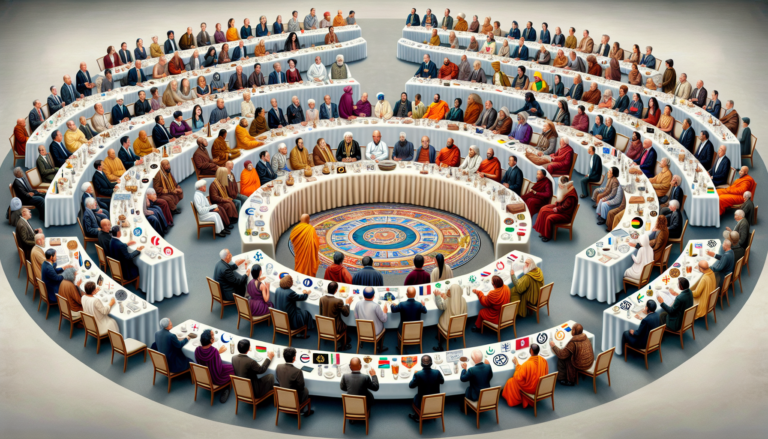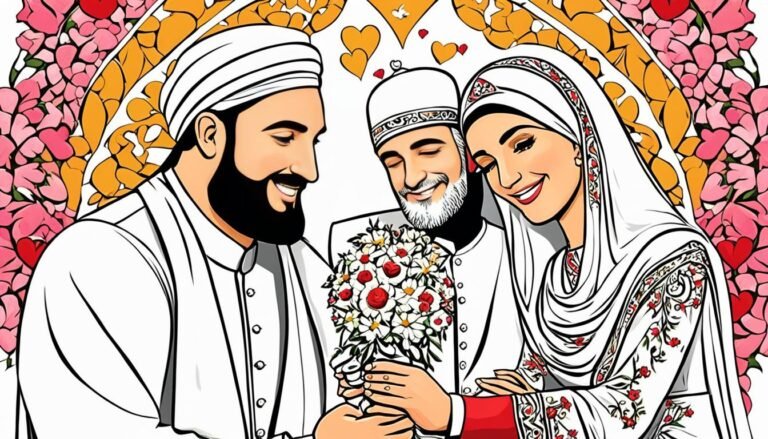Building Unity: Powerful Interfaith Dialogue Examples
Understanding Interfaith Dialogue
Interfaith dialogue is when folks from different religions sit down, chat, and really try to get where each other is coming from. It’s about finding common ground and working together to make the world a better place. It’s a chance for people with different beliefs to share their views and build mutual respect.
What’s It All About?
Interfaith dialogue is all about people from various religious backgrounds having open conversations to understand each other better and find shared values. It’s a way to foster empathy and tolerance. The big goal? To promote peace and cooperation among different faiths.
What Makes a Good Dialogue?
For interfaith dialogue to really work, a few things need to be in place. These elements help create a space where people can talk openly and understand each other. Here’s what you need:
-
Open-mindedness: Come to the table ready to listen and learn. Being open-minded helps you see things from another’s perspective and builds respect and tolerance.
-
Respect: Show respect for each other’s beliefs and traditions. Respect creates a safe space for dialogue and builds trust.
-
Finding Common Ground: Look for shared values and beliefs. Focusing on similarities rather than differences helps build cooperation among different faith communities.
-
Acknowledging Differences: It’s important to recognize and respect the differences in beliefs and practices. Understanding these differences enriches the dialogue and appreciation of diverse traditions.
-
Ongoing Engagement: Interfaith dialogue isn’t a one-off thing. It’s an ongoing process that requires regular conversations to build relationships and understanding.
By sticking to these principles, interfaith dialogue can be a powerful way to promote peace and understanding among people of different faiths. Want to see some real-life examples? Check out the next section on Examples of Interfaith Dialogue Initiatives.
Types of Interfaith Dialogues
Interfaith dialogue is all about bringing folks from different religious backgrounds together to chat, share, and work together. It’s a way to break down barriers, build empathy, and create meaningful connections. Here are four types of interfaith dialogues that you might come across:
Sharing Life Stories
This type of dialogue is all about swapping personal stories, traditions, and practices. When people share their own experiences, they open up a window into their spiritual journeys. It’s like sitting around a campfire, listening to tales that help you understand where someone else is coming from. This kind of sharing helps folks appreciate each other’s lived realities and find common ground, even when their paths are different.
Working Together
When people roll up their sleeves and work on community projects together, magic happens. Universities, for instance, often have faith societies and spaces where students from different religions can come together and collaborate. By working side by side, people discover shared values and goals, breaking down religious boundaries in the process. It’s all about doing good together and building relationships through action.
Talking Theology
This one’s for the deep thinkers. Theological exchange involves diving into the beliefs, doctrines, and practices of different religions. It’s a chance for religious scholars, clergy, and anyone with a keen interest in theology to have meaningful conversations about their faiths. By discussing these topics, participants gain a better understanding of various religious traditions and the diverse perspectives that exist.
Experiencing the Divine
The dialogue of religious experience is about sharing and understanding the spiritual practices, rituals, and moments of transcendence in different religions. It’s like exploring a rich tapestry of spiritual experiences, where participants gain a deeper appreciation for how others connect with the divine. This type of dialogue fosters empathy, respect, and a broader understanding of the spiritual dimensions of various faith traditions.
These different types of interfaith dialogues are powerful tools for building bridges, fostering understanding, and promoting collaboration among people from diverse religious backgrounds. By engaging in these dialogues, we can contribute to creating a more harmonious and inclusive society. If you’re curious about the impact and importance of interfaith dialogue, check out our article on the importance of interreligious dialogue.
Examples of Interfaith Dialogue Initiatives
Interfaith dialogue is all about bringing people from different religious backgrounds together to understand each other better, build bridges, and work together. Here are some cool examples of how this has been done successfully.
Interfaith Library Creation
Imagine a library filled with books that celebrate all kinds of religions. That’s what some schools are doing! By adding children’s books that talk about different faiths, these libraries help kids learn about and respect various religions. It’s like giving young minds a passport to explore the world of faiths.
Emerging Religious Leaders Course
The Institute for Islamic, Christian, and Jewish Studies has this awesome course called “Emerging Religious Leaders.” They bring together ten students from each faith to learn about each other’s beliefs, find common ground, and share their experiences (Rabata). It’s like a crash course in understanding and collaboration for future faith leaders.
Interfaith Fellowship Activities
These activities are all about bringing people together for shared experiences. Think joint worship services, community service projects, or cultural exchanges. By doing things together, people from different religions can build friendships, understand each other better, and create a sense of community that goes beyond religious lines.
Innovative Interfaith Student Events
Interfaith student events are where creativity meets dialogue. These events give students a chance to engage with each other and reflect on their beliefs. Here are some fun examples:
-
Talk Better Together: This event gets people talking to someone from a different religious or philosophical background. They ask each other about what drives them to make the world a better place, sparking meaningful conversations (Interfaith America).
-
Speedfaithing: Think speed dating, but for faiths. Speakers share their religious or philosophical values in quick sessions, followed by Q&A. It’s a fast-paced way to learn about different perspectives.
-
Site Visits: Visiting religious or non-religious sites lets participants see people in their sacred spaces. It’s a hands-on way to learn about and appreciate different traditions (Interfaith America).
-
Fast-a-thons: Participants fast for 24 hours and donate the money they would have spent on food to a cause. It’s a way to reflect on fasting practices in various religions and promote cooperation.
-
Service Projects: Working on community service projects together helps students from different religions reflect on shared values and collaborate towards common goals.
These examples show how interfaith dialogue can bring people together, help them learn from each other, and work towards a more inclusive and harmonious society. It’s all about understanding, respect, and cooperation.
Why Interfaith Dialogue Matters
Interfaith dialogue is like the secret sauce that brings people from different religious backgrounds together, promoting understanding, cooperation, and harmony. By sparking meaningful conversations and building bridges between communities, it makes a huge difference in society.
Building Bridges in Society
One of the coolest things about interfaith dialogue is how it creates connections within society. When folks from different religions sit down for open and respectful chats, they find common ground and start to understand each other better. This helps bust stereotypes, cut down on prejudice, and build a sense of unity among diverse groups. By connecting people, interfaith dialogue makes society more cohesive and inclusive.
Fostering Understanding and Collaboration
Interfaith dialogue is a game-changer for fostering understanding and teamwork between different religious communities. When people engage in these conversations, they get a deeper appreciation for others’ beliefs, practices, and values. This understanding promotes empathy and respect, setting the stage for meaningful collaboration on shared issues and goals (Movement.org.uk). It encourages folks to see their shared humanity and work together for the common good, crossing religious boundaries for a better society.
Lessons Learned from Dialogue
Interfaith dialogue is like a classroom without walls. Participants get to challenge their own assumptions, broaden their perspectives, and learn more about different faith traditions. These lessons can lead to personal growth, spiritual development, and a greater appreciation for the diversity of religious beliefs and practices. By actively engaging in these conversations, people become champions for each other’s religions, fighting against prejudice and promoting cooperation (Wikipedia).
Global Initiatives for Interfaith Harmony
The world has recognized the importance of interfaith dialogue, leading to global initiatives that promote harmony and understanding. One standout initiative is the “World Interfaith Harmony Week,” proposed by HM King Abdullah II of Jordan at the United Nations General Assembly. Held during the first week of February each year, this event encourages people of all faiths and beliefs to come together in the spirit of understanding and cooperation. These global initiatives provide platforms for dialogue, teamwork, and celebrating diversity.
In a nutshell, interfaith dialogue makes a big impact on society by building bridges, fostering understanding and collaboration, and offering valuable lessons for everyone involved. When people engage in these conversations, they help create a more inclusive and harmonious society. By promoting interfaith dialogue, we can work towards a world where people of all faiths and beliefs come together in mutual respect and cooperation.







